A Review of the New Haida M10 Filter System and Red Diamond Filters-I
by Nando Harmson
From Fstoppers
During the last photo trip I hosted at Lofoten, I used the new Haida M10 filter system together with their new filters. Although I was somewhat skeptical at first, I found it to be a really nice system that worked very well under cold conditions. This is my review.
Ten years ago, I started with Lee filters and was content with it. Demands grew and finally, I ended up with the amazing filters from Kase. I wrote an article on that transition here on Fstoppers, which you might like to check out also.
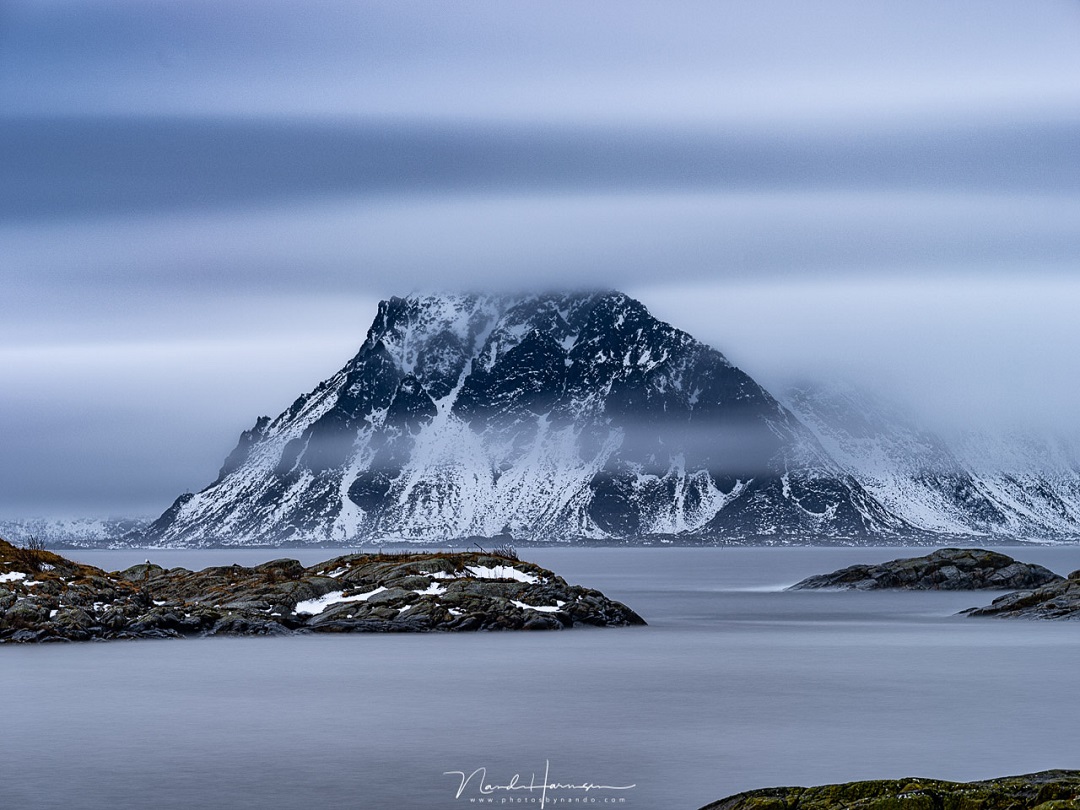
Shooting long exposures can be fun, and can provide a new dimension to your photos. For this you need to use filters and a filter system is a good choice. For Winter at Lofoten I was asked to use the new Haida M10 system with the new Red Diamond filters. (250mm | ISO100 | f/8 | 120s | Haida ND1000)
Somewhere between Lee and Kase I used filters from Haida for a while. These filters were okay, but not great. I had some issues with the way Haida constructed the filter holder. On top of that, I wasn't that fond of the filters. Again, these were okay, and gave good results, but these did not live up to my expectations.
Last year I was contacted by Haida again to test their brand new M10 filter system, together with the new improved Red diamond filters. Although I invested seriously in the Kase system, I decided to give it a try. Haida kindly provided me with a beautiful set of filters for my trip "Winter at Lofoten,Norway."
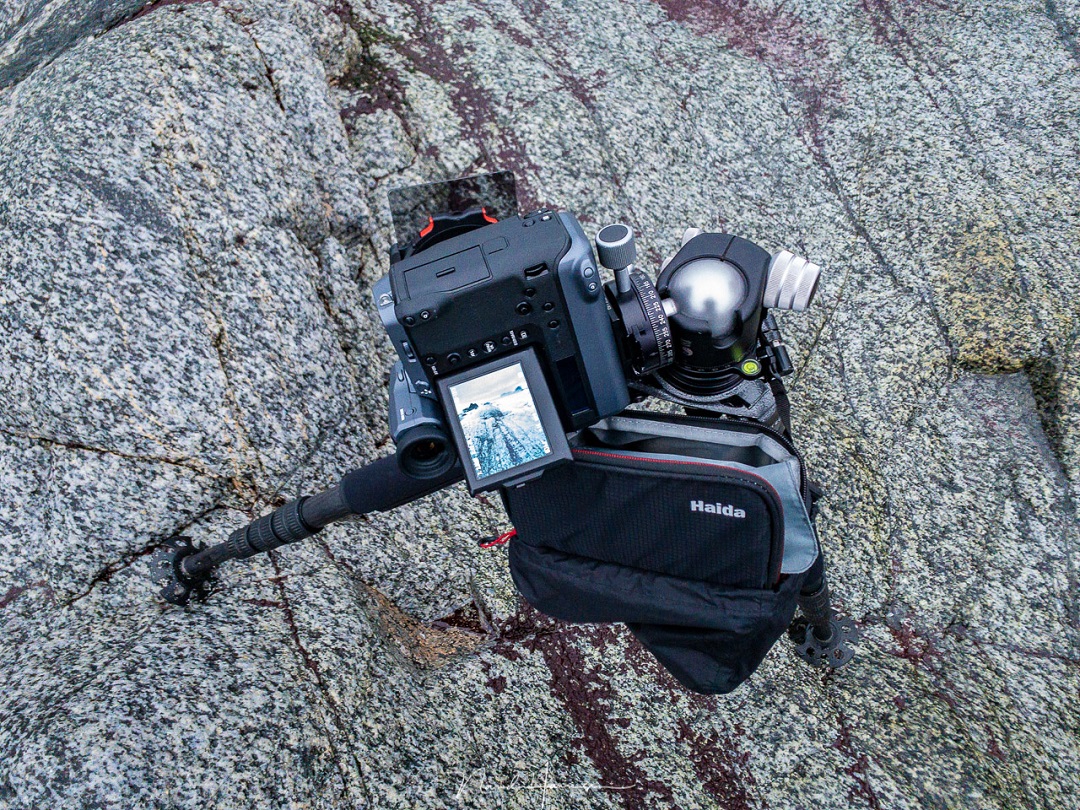
I used the new Haida M10 system and Red Diamond filters during the Winter at Lofoten tour. Between snow and rain I was able to play a lot with these beautiful filters.
My First Impression of the Filter Holder
The new Haida M10 filter holder is nothing like the old one. Its design is completely new and improved, incorporating a drop-in slot for a polarization filter, or neutral density filters Neutral density drop-in filters with built in polarization are also available. There are square filters slots too, allowing the normal 2mm thick 100 x 100cm and 100 x 150cm filters to be used.
The holder is connected to the lens through an adapter ring, just like any other system. A large spring-loaded red lever provides a good connection between holder and adapter ring. It is easy to rotate the filter holder when connected, and I found no dangers of losing the filter holder while working or walking with the camera; it stays perfectly in place.
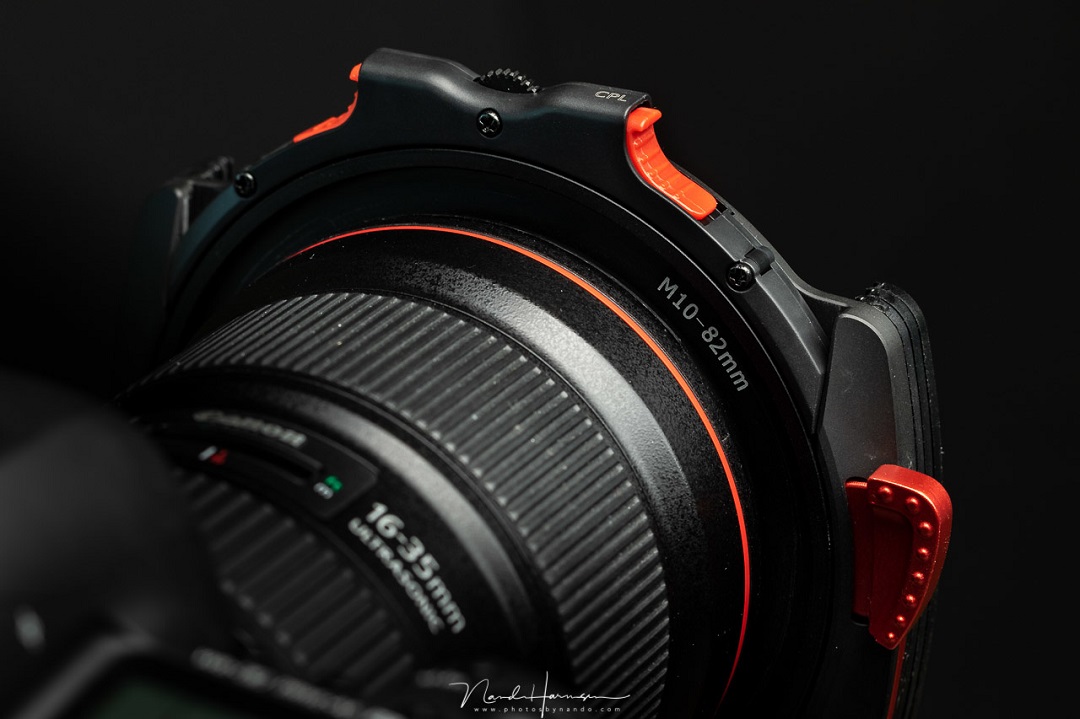 The filter holder is hold in place by a spring-loaded red lever. There is no risk of losing the filter holder with normal use. And by change it fits quite nicely with the red L-series lenses. I am sure it will also fit with the red accent of the Nikon cameras.
The filter holder is hold in place by a spring-loaded red lever. There is no risk of losing the filter holder with normal use. And by change it fits quite nicely with the red L-series lenses. I am sure it will also fit with the red accent of the Nikon cameras.
The polarization filter needs to be dropped into the drop-in slot. A small rotating wheel on top of the filter makes it possible to rotate the polarization filter without having to remove any other filters that might be placed. When no polarization filter is needed, a dummy drop-in ring can be inserted to prevent any light leaks.
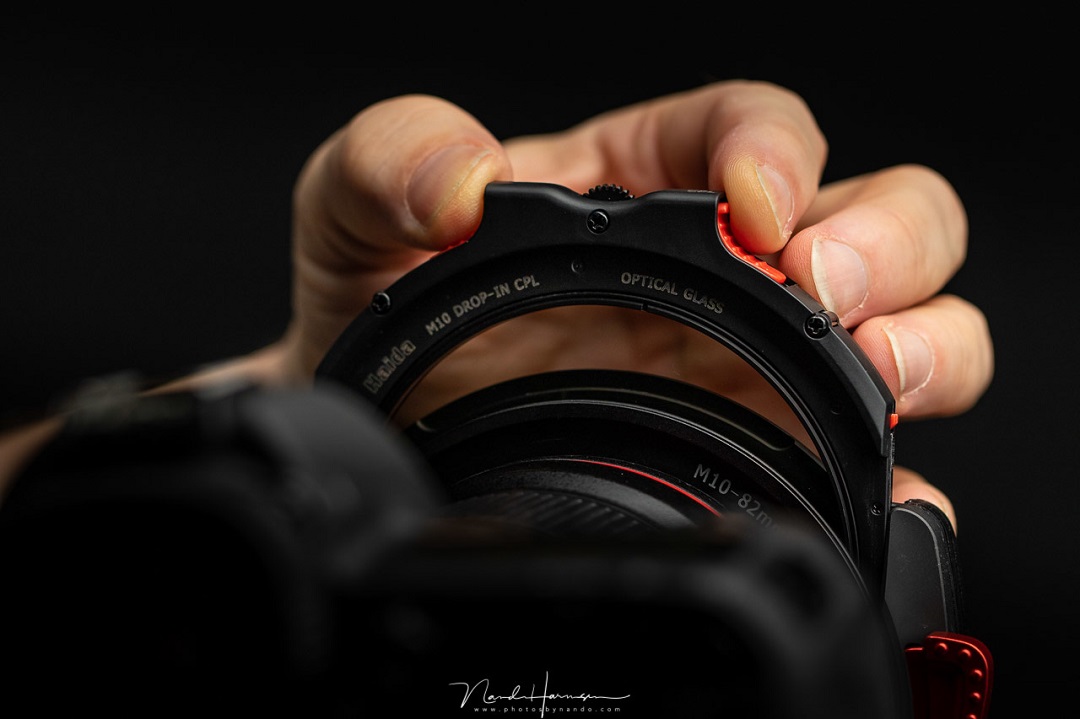 A polarizer can be placed in the drop-in slot. A small rotation dial makes it possible to rotate the filter to the right angle. The filter also accepts other drop-in filters provided by Haida.
A polarizer can be placed in the drop-in slot. A small rotation dial makes it possible to rotate the filter to the right angle. The filter also accepts other drop-in filters provided by Haida.
The drop-in filters slide in easily, but you have to make sure they're positioned in the right way. There is a front-side and back-side. Small plastic notches hold the drop-in filters in place.
The inside of the filter holder has a thin ring of foam, to prevent any light leaks when using dark neutral density filters. And indeed, the neutral density filters don't have a foam ring themselves. Foam is provided with the filters nevertheless, making it possible to use the filters in other filter holders.
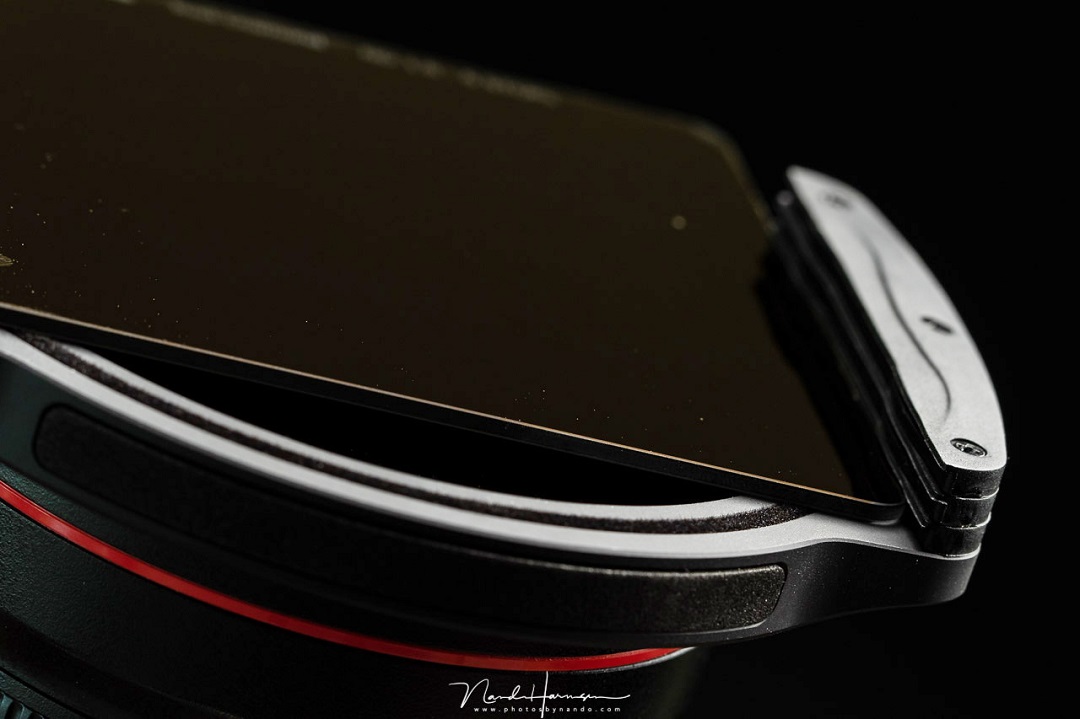 There is a thin foam ring on the inside of the filter holder. It prevents light leaks when using dark ND filters.
There is a thin foam ring on the inside of the filter holder. It prevents light leaks when using dark ND filters.
The filter holder itself comes with a rather large round pouch, giving room for the polarization filter and the dummy ring. It provides a good protection for the holder but it will take a lot of space in your bag. It can easily be connected to a D-ring outside the camera bag if you like.
I used an M10 filter bag that gave room for all the filters I needed, including the filter holder. You can wear it on your belt, or hang it on the tripod, allowing easy access to any filters you have in the filter bag. I can definitely recommend the M10 filter bag.
My First Impression of the Red Diamond Filters
Haida has a new line of filters, called the Red Diamond line. These filters have a quality look and feel to it, with rounded corners and a beautiful finish. Although these filters are made from hardened glass, being able to survive a fall, I did not try this at home. And not on Lofoten either as a matter of fact.
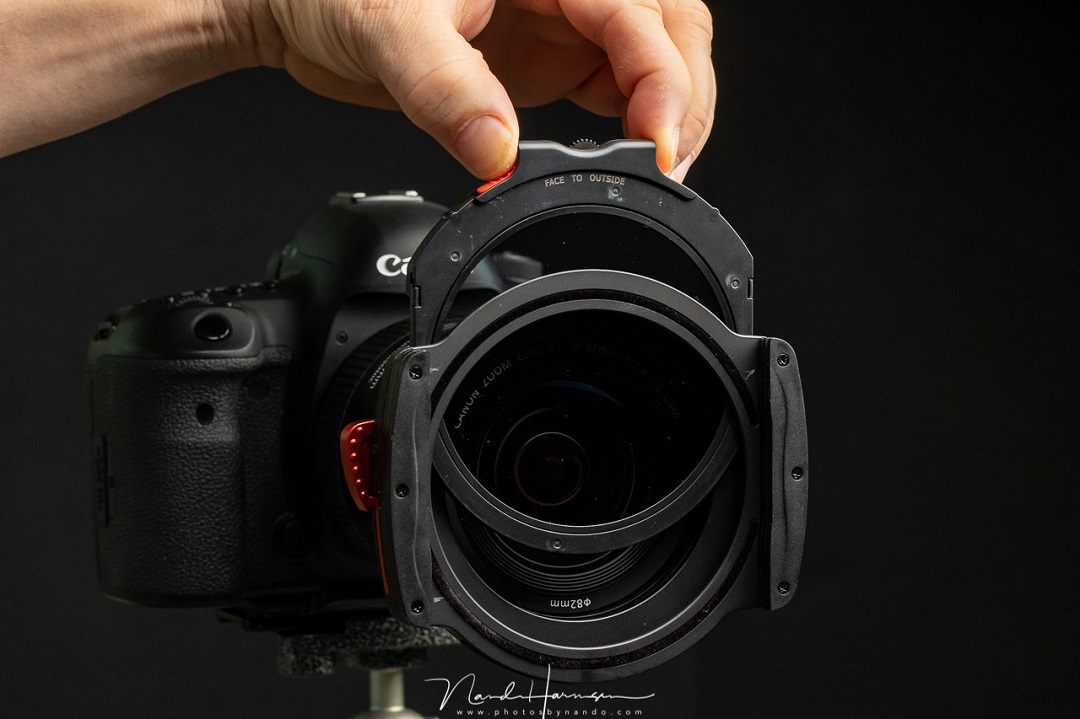 THe drop-in filters are kept in place by two small notches on the side. It is enough to prevent the drop-in filter from falling out. It works very well.
THe drop-in filters are kept in place by two small notches on the side. It is enough to prevent the drop-in filter from falling out. It works very well.
The round drop-in filters are also made from hardened glass, but fitted into a plastic ring that slides in the filter drop-in slot. Two notches hold the filter in place, and it stays in place regardless of the position of the filter holder. The filters are easy to remove, but you have to check the position of the filter before you place it in the holder. It only fits one way.
The square filters come in a metal hinged box, providing a maximum safety. The round filters are placed in a translucent plastic box. As said, I left all boxes at home, carrying the filters in the M10 filter bag.
 The ND64, six stops filter in the M10 filter holder.The filters have a real high quality. But the text can be hard to read under certain angles.
The ND64, six stops filter in the M10 filter holder.The filters have a real high quality. But the text can be hard to read under certain angles.
It can be difficult to see which filter you take from the bag.The square filters have a thin outline text which can be difficult to read at times. The drop-in filters have a notification on top, but it is in a gray text on a dark underground, making it really hard to read. It doesn't matter that much when you only use a polarization filter, but when you have multiple drop-in filters, it is easy to grab the wrong one.
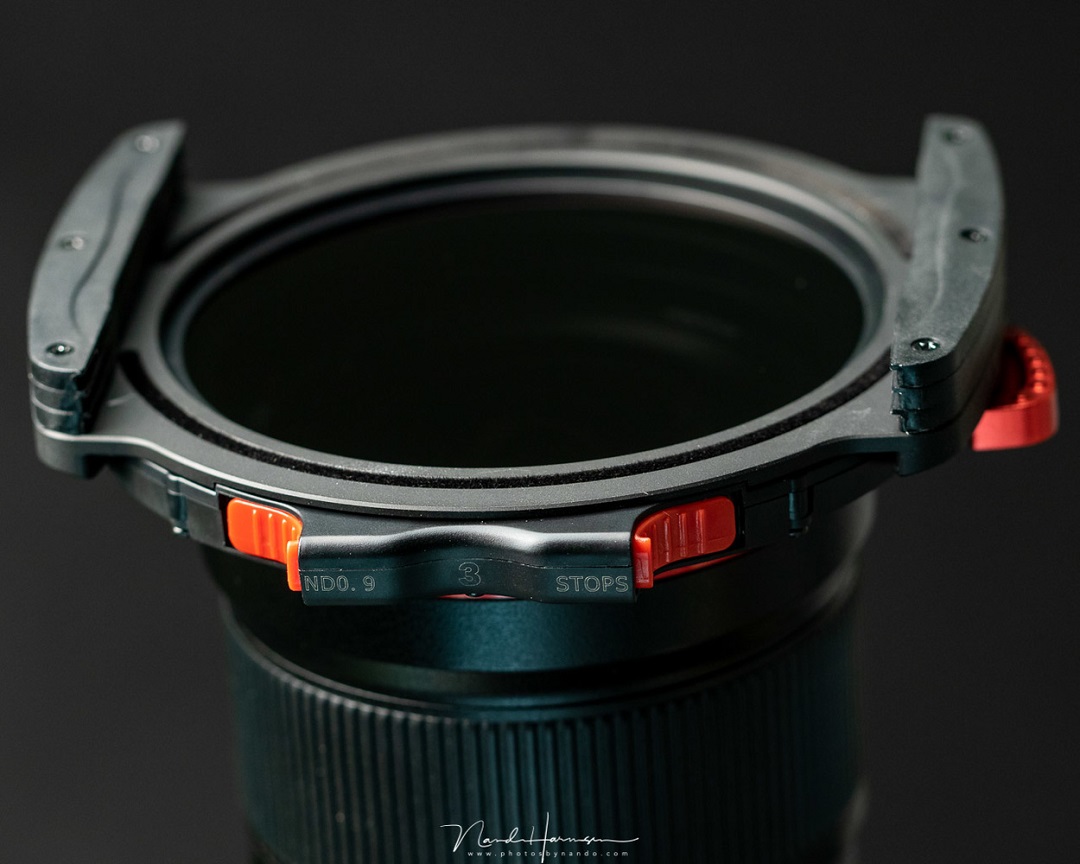 With normal light the text on the drop-in filters can be read quite easily. But the light is not always good, making it hard to distinguise the filters if you have more than one.
With normal light the text on the drop-in filters can be read quite easily. But the light is not always good, making it hard to distinguise the filters if you have more than one.
Using the Filter System During the Harsh Weather Situation at Lofoten
I got a chance to use the filters during my annual "Winter at Lofoten" trip. This year we had a Polar Low, with strong winds and fierce snow showers. At times it was difficult or even impossible to use filters, but we had some really nice moments for long exposure photography.
I kept the adapter rings on my lenses at all times, with special lens caps that fit the adapter ring. It prevents a constant placing or removing rings on the lenses. When I wanted to place the M10 filter holder, I found out it can be placed very easy with just one hand. It is really a matter of seconds.
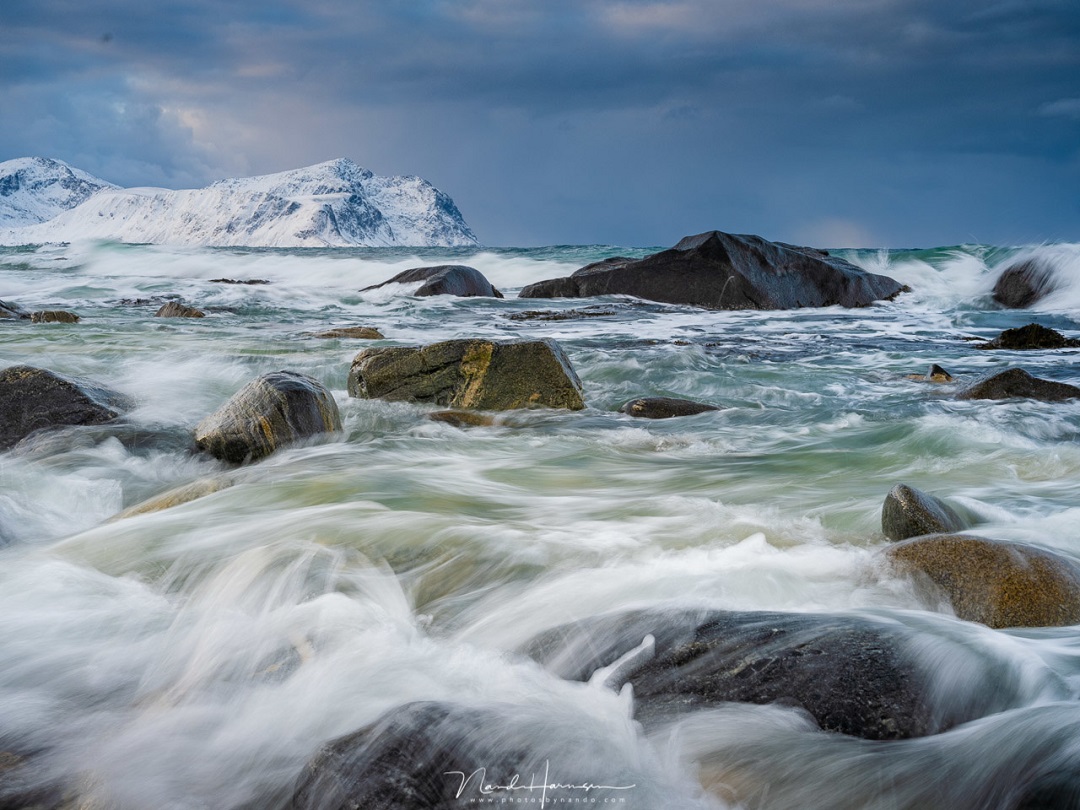 Shooting on a beach at Lofoten with the tides coming in. Working with the Haida filterholder is really easy, which allows you to keep an eye on the waves. (63mm | ISO400 | f/22 | 1/9s | Haida 0,9GND medium + CPL)
Shooting on a beach at Lofoten with the tides coming in. Working with the Haida filterholder is really easy, which allows you to keep an eye on the waves. (63mm | ISO400 | f/22 | 1/9s | Haida 0,9GND medium + CPL)
I had a few drop-in filters with me, like the polarization filter and a combination of the polarization filter with the ND64. I also had a normal square ND64 filter, a ND1000 filter, and a three-stop medium GND filter with me.
Placing filters was just as easy, or as difficult as any other filter system. Except the drop-in filters, which fell into place when dropping these filters into the slot. The square filters took a little bit more effort, especially the dark neutral density filters, that had to be placed against the foam ring inside the filter holder. With a bit of effort, I could place and remove filters with my gloves on.
 When working in cold environments, you might want to use gloves. The M10 system is easy to use with gloves, but you might have some difficulties when rotating the polarization filter.
When working in cold environments, you might want to use gloves. The M10 system is easy to use with gloves, but you might have some difficulties when rotating the polarization filter.
To be continued...
Related News
- A Review of the New Haida M10 Filter System and Red Diamond Filters-I
- Haida Team Wishes You a Merry Christmas
- Haida Picture Appreciation | November 2025
- Haida NanoPro Magnetic Filter Kit for Digital Camera
- Haida Carbon Fiber Protective Plate
- Haida New Filter Kits for DJI Mini 5 Pro and Mavic 4 Pro
